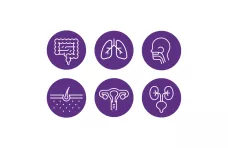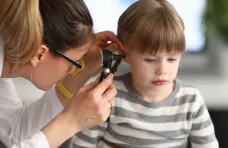Mexico 2025: knowledge and behaviors about microbiota
The survey was conducted by Ipsos among 7,500 people in 11 countries (France, Portugal, Poland, Finland, Italy, Germany, United States, Mexico, Brazil China, and Vietnam).
Mexicans and microbiota: a curious and committed population when it comes to microbiota and "good habits", ready to go even further
Summarizing Mexican results in the survey
In 2025, Mexicans show strong engagement with microbiota health: awareness is widespread, everyday habits are largely aligned with good practices, and healthcare professionals are both trusted and active in education. While scientific understanding remains uneven, especially around technical terms, interest in emerging tools like microbiota testing is remarkably high, reflecting a population that is curious and proactive.
1. Mexico presents a broad awareness of the microbiota, but still superficial
In Mexico, 72% of respondents say they have heard of the microbiota, but only 21% report knowing exactly what it is, suggesting that while awareness is widespread, in-depth understanding remains limited.
A notable distinction emerges between traditional and scientific terminology:

“Gut flora” is recognized by 98% and “vaginal flora” by 86%, while the more precise terms “gut microbiome” and “vaginal microbiome” are known by only 63% and 64%, respectively.
This gap highlights a familiarity with everyday language over technical vocabulary.
More broadly, awareness of other microbiotas varies: skin (43%) and lung (42%). Notably, 62% are familiar with the ENT microbiota, well above the global average of 42%.
Understanding of scientific concepts is uneven:
of Mexicans know what dysbiosis means
(vs 33% overall)
have never heard of dysbiosis.
(vs 38% overall)
In contrast, probiotics (97%) and prebiotics (87%) enjoy very high recognition—indicating strong product awareness even if deeper scientific knowledge is still developing.

Learn all about microbiota
Learn more
2. Everyday habits in Mexico show a willingness to act on microbiota health
In 2025, 64% of Mexicans report having changed their habits to maintain a balanced and well-functioning microbiota—a figure notably above the global average of 56%. This demonstrates a strong willingness to act on microbiota awareness in daily life.
When it comes to specific behaviors, the picture is mixed.

78% say they have adopted a varied and balanced diet to support their microbiota—an encouraging result, though still the lowest score among all countries surveyed. Also, 80% claimed to limit ultra-processed food consumption.
81% of Mexicans declared to engage in physical activity (-2 points vs 2024, 77% overall).
More broadly, Mexicans demonstrate many microbiota-friendly habits: 79% do not smoke (vs. 76% overall) and 40% avoid taking more than two showers per day—a practice that helps preserve the skin microbiota (vs 47% overall).
These figures reflect a population that is engaged, informed, and increasingly aligned with behaviors that support microbiota health, despite some room for improvement, in nutrition for example.
Finally, 61% consume probiotics and 50% consume prebiotics, both above global averages of 49% and 41%, respectively.

Microbiota & sport: competitive micro-organisms
Find out more...
3. Mexican healthcare professionals are trusted by the majority of the population and are proactive
In Mexico, 24% of respondents say they first heard about the microbiota in a healthcare setting, and 17% specifically from a healthcare professional—both figures above the global averages of 17% and 11%, respectively.
Trust in healthcare professionals is particularly strong: 84% of Mexicans consider them the most reliable source of information on the microbiota (+3 points vs 2024, 78% globally).
This trust appears well-founded, as Mexican healthcare providers demonstrate a high level of engagement:
- 54% of respondents have received an explanation of the microbiota and its functions (vs. 42% globally)
- 61% were informed about the importance of maintaining microbiota balance (vs. 47%)
- 63% received advice on healthy behaviors to support it (vs. 46%)
- 71% have been prescribed probiotics or prebiotics (vs. 49%)

These explanations come primarily from general practitioners, cited by 70% of respondents.
Compared to other countries, this result is well above the global average of 48%.
However, preventive communication around antibiotics remains limited: only 26% of respondents say they were informed by their healthcare provider about the potential negative impact of antibiotics on the microbiota at the time of prescription.

Antibiotics: what impact on the microbiota and on our health?
Learn more
4. Despite lower awareness of microbiota testing, Mexicans declared being interested in taking one
In Mexico, only 27% of respondents have heard of microbiota testing, indicating limited awareness to date. However, interest is remarkably high: 82% say they would be willing to take a test (vs 61% globally).
Some of the microbiota they would test are the gut microbiota (76%) and the urinary microbiota (46%). Among those interested, the most commonly cited motivations include:
believe this test would be useful to conduct a health check-up
(vs 60% overall)
view it as a way to prevent and/or slow down the onset of pathologies
(vs 51% overall)
see it as a tool to help rebalance their microbiota
(vs 53% overall)
Additionally, 61% would be willing to donate their stool samples for scientific research, demonstrating a strong openness to emerging microbiota-related health initiatives (vs 59% overall).
What is microbiota testing and mapping?
There are different types of microbiota testing, not only for the gut. Overall, they seek to identify microorganisms, such as bacteria and fungi, living in a specific part of the body to help inform health decisions and/or outcomes.
Intestinal microbiota testing, which seems to be the most common type of analysis, generally tests a person’s stool sample. For example, they could look for illness markers or extract DNA.
Both collective and individual gut microbiota analyses start with a stool sample. Microbiota mapping aggregates results from multiple microbiota tests to advance research and fight chronic diseases. Individual tests provide personal data on gut flora, with no definition of a clinically validated “healthy” or “pathological” microbiota. Thus, mapping fuels population-level knowledge, while testing gives a snapshot of one’s own microbiota.

Gut microbiota: still many things to be discovered
Find out more...
Methodology
This third edition of the International Microbiota Observatory was conducted by Ipsos on 7,500 individuals across 11 countries (France, Portugal, Poland, Finland, Italy, Germany, the USA, Brazil, Mexico, China, and Vietnam). Two new countries were included in this edition: Italy and Germany.
The survey was conducted over the Internet between January 21 and February 28, 2025. For each country, the sample is representative of the population aged 18 and over in terms of :
- gender
- age
- profession
- region
Representativeness was ensured via quota sampling, the most commonly used sampling method for obtaining a representative sample of the population studied. The quota variables for each country were gender, age, region, and socio-professional category. The data were adjusted:
- within each country, again to ensure that each population is representative
- globally, so that each country has the same weight. Statistical analyses were carried out using Cosi software (M.L.I., France, 1994), with a significance level of 95%
The survey population was 48% male and 52% female. The average age was 47.3 years. The sample of 7,500 individuals made it possible to carry out a detailed analysis by age group:
- 18-24
- 25-34
- 35-44
- 45-59
- 60 and over
Changes from one year to the next have been measured on a like-for-like basis, i.e. calculated taking into account only those countries present in both the first and second editions of the survey. While we do have results for the new countries included in this third edition (Germany and Italy), they have not been taken into account when calculating trends, since they were not included in the first two editions of the survey.
The questionnaire includes 16 questions on:
- socio-demographic data
- the level of knowledge about microbiomes
- the level of and desire for information from healthcare professionals
- the identification and adoption of behaviors designed to combat microbiome imbalances
- the level of knowledge, information, and behaviors of women about the vulvo-vaginal microbiome
- health data
The questionnaire lasted ten minutes and the 7,500 individuals had to complete the entire questionnaire in order to be included in the survey. The terms used in the questionnaire to talk about the microbiome have been translated and adapted to the terms used in each country.


